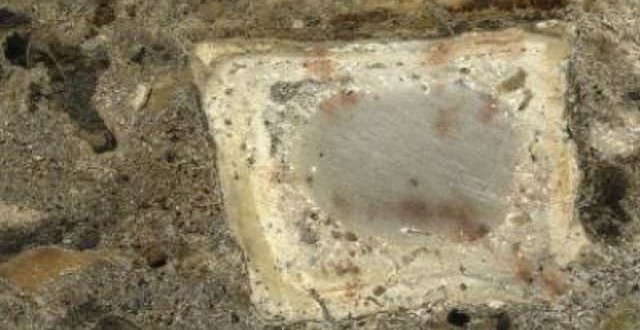A team of Israeli scientists have recently discovered in the Qesem Cave, near present-day Rosh Ha’ayin, the earliest evidence – dating to around 300,000 years ago – of unequivocal repeated fire building over a continuous period.
The team is headed by Profs. Avi Gopher and Ran Barkai of Tel Aviv University. Dr. Ruth Shahack-Gross of the Kimmel Center for Archeological Science at the Weizmann Institute has been involved in this archaeological research since excavations began, and she collects samples on-site for later detailed analysis in the lab.
To test the micro-morphology of the ash, Shahack-Gross extracted a cubic chunk of sediment from the hearth, hardened it in the lab and sliced it into extremely thin slices – so thin they could be placed under a microscope to observe the exact composition of the materials in the deposit and reveal how they were formed.
She was able to distinguish a great many micro-strata in the ash – evidence of a hearth that was used repeatedly over time. Around the hearth area, as well as inside it, the archaeologists found large numbers of flint tools that were clearly used for cutting meat.
By contrast, the flint tools found just a few meters away had a different shape, designed for other activities.
Also in and around the area were large numbers of burnt animal bones – further evidence for repeated fire use for cooking meat. This organization of various “household” activities into different parts of the cave points to an organization of space – and a thus kind of social order – that is typical of modern humans.
“These findings help us to fix an important turning point in the development of human culture, in which humans first began to regularly use fire both for cooking meat and as a focal point – a sort of campfire – for social gatherings,” says Shahack-Gross.
“They also tell us something about the impressive levels of social and cognitive development of humans living some 300,000 years ago.”
The researchers think that these findings, along with others, are signs of substantial changes in human behavior and biology that commenced with the appearance in the region of new forms of culture – and indeed a new human species – about 400,000 years ago.
Canadajournal/Agencies
 Canada Journal – News of the World Articles and videos to bring you the biggest Canadian news stories from across the country every day
Canada Journal – News of the World Articles and videos to bring you the biggest Canadian news stories from across the country every day



